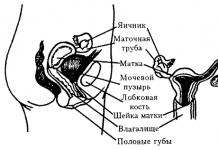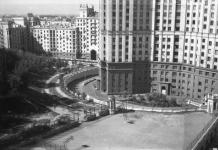Of course, the twentieth century was rich in events. And perhaps the brightest and most commercially profitable enterprise of the 20th century in the field of art is the legendary "Factory" by Andy Warhol. What was originally conceived as an ordinary creative studio of a New York artist eventually turned into a haven for all the urban bohemians of that time.
there were artists, musicians, poets, playwrights and actors Warhol literally attracted artists. Not only attracted but also knew how to benefit from it. At that time, avant-garde art was developing rapidly and attracted more and more interest from an advanced public, as well as bewilderment from conservatives. Warhol became one of the most famous and important figures in the art of the 20th century, thanks to his works in the style of pop art, as well as numerous projects, including films, music production and stage performances.
Warhol was born in Pennsylvania to a family of Slovak immigrants. He was the fourth child in the family. His family emigrated to America in 1914. As a child, Andy Warhol suffered a serious illness known as Sydenham's chorea. During this period, he enjoys drawing and making collages from photographs of movie stars. Thanks to the incredible painstaking perseverance and immersion in their work.
Andy eventually achieves successes unthinkable for an artist. He is recognized as a genius during his lifetime, and any things or paintings signed with his name fly like hot cakes. In its best times, the factory produces 1000 silkscreens a day, plus films are constantly being shot and music is being written. Andy knew how to turn the elite picturesque market into a cash cow and successfully applied this knowledge in practice. He collaborated with many prominent rock stars of the time, in particular he produced and drew the cover for the first album "Velvet undeground", which was warmly received by both critics and listeners and is still included in all significant tops related to rock music.
Interesting facts about Andy Warhol
Andy Warhol's works are among the most expensive in the world.
Warhol was a deeply religious man, despite all his activities.
Andy was by nature a loner. And he even ate always alone, not letting anyone deep into his inner world.
One of the participants in the factory tried to shoot the master, but she only managed to seriously injure Warhol.
In one of the artist's films, a no less eccentric genius, Salvador Dali, appeared.
Andy Warhol is an artist, photographer, director, designer, founder of the pop art direction, creator of the "Factory" ... A man is a legend. He made the world look at the world of art in a new way. And he is rightfully considered the discoverer of the loft style. We have already published material entirely dedicated to the loft, and this time we are faced with the task of telling as fully as possible about Andy Warhol's studio and his views on interior design.
Perhaps, at the mention of the loft style, the associations “large space”, “bare walls”, “brick”, “art”, “original furniture” and ... “Andy Warhol” immediately arise. Anyone who is at least a little interested in design and architecture knows that the first loft is the "Factory" of the cult artist Andy Warhol. Despite the fact that the loft as a style was formed relatively recently - in the middle of the 20th century - today, perhaps, it can already be called a classic of modern design.
The birth of "Factory"
To understand how the loft style appeared, let's look at what the 40s of the 20th century were like in New York. First of all, this is the time when the city began to feel compressed, and there was an urgent need to expand its borders. In order to solve the problem, the authorities moved industrial and manufacturing enterprises to sleeping areas and the countryside. Now the old buildings in Manhattan, which housed factories and plants, began to be empty, but this was not for long. The high population density and the limited nature of the city led to the fact that real estate in the central regions was rapidly becoming more expensive, but at the same time, huge empty plants and factories were rented out for next to nothing, because no one needed them. Artists, musicians and architects took advantage of the situation to organize their own studios. As you understand, artists lived and worked in one place.
According to the American cinematographer, poet and contemporary art connoisseur Gerard Malanga, Andy Warhol was also looking for a room for his studio. The search took about 6 weeks, and he accidentally stumbled upon a huge industrial space with wooden floors and full wall windows. At first glance, it was an unsuitable place for an art studio, but the shabby and cold concrete, huge ceilings gave the future workshop a special, bohemian aura. Warhol was very pleased with his choice. Thus, "The Factory" appeared - Warhol's art studio, where almost literally workers stamped paintings, made copies and developed photographs.
The first address of this bohemian workshop is Manhattan, 47th Street, building 231, 5th floor. Walls, floor, ceiling, furniture - everything was painted with silver paint, hence the name "Silver Factory" ("Silver Factory"). It has been active since 1964. Then, over the years of its existence, the studio changed many addresses.
So, for the next 11 years, Warhol's brainchild was located in a huge room at 860 Broadway. This time, the "Factory" occupied an entire floor, had its own exit to the freight elevator and the second staircase. Andy survived the attempt on his life and now took a different approach to security issues: several exits allowed him to leave the premises unnoticed in case of accidents.
The decline of the "Factory" occurred in 1984, when she moved into a regular office on 33rd Street.

"Silver Era"
Perhaps the most vividly the spirit of the era and the atmosphere in Warhol's studios conveys the "Factory", located at the first address. In relation to its design, the words of the artist himself are relevant:
“Jewelry does not make a person more beautiful, but it makes him feel more beautiful. If a beautiful person wear jewelry and nice clothes and put him in a beautiful house with beautiful furniture and beautiful pictures, the person will remain the same, but will think that he has become more beautiful. But if a beautiful person is dressed in rags, he will become ugly. You can always make a person less beautiful. Beauty in danger becomes more beautiful, but beauty in the mud becomes ugly.”The idea for the Silver Factory came to Warhol when he saw the apartment of his friend, photographer, filmmaker and designer Billy Name. She was all painted silver. Name designed the "Factory" and the elevator in the same spirit: broken mirrors, foil, silver paint. Warhol and Name decorated almost everything with foil: pipes, air ducts and even a toilet bowl. Silver balloons floated from the ceiling. The artists experimented with the lighting of the "Factory", installed mirrors decorated with beads and feathers in different places. Doors were painted on some walls. "Factory" has become a truly fabulous place.

The atmosphere of the studio was striking in its bohemian, casual chic. So, the guests of the "Factory" found interesting things in landfills and brought them to the workshop. For example, Billy Name found a red curved sofa on the street during one of his nightly walks. This sofa blended very well with the silver interior and quickly became a favorite resting place for Warhol guests. Andy often used it as a backdrop for his underground films. Unfortunately, during the move in 1968, the sofa was lost.

Let's dance
One can really say about Warhol's "Factory" that art was stamped there. It was the place where the American bohemia lived. One could come here without an invitation and become part of the art world. Actors, directors, photographers, designers, artists, party-goers and free thinkers gathered at the "Factory". The heyday of Warhol's brainchild is otherwise called the "Silver Era", this is due not only to the specific color scheme of the loft, but also to the special decadent atmosphere of endless parties, the "sea" of money, drugs and "stars".
Among the "stars" released by the "Factory" are actress and socialite Edie Sedgwick, singer and composer Nico (Christa Paffgen), actress and artist Ultraviolet (Isabelle Colleen Dufresne), actress Candy Darling, actor Paula America and others.
Often Warhol parties were attended by Mick Jagger (The Rolling Stones), Bob Dylan, Jim Morrison (The Doors), Salvador Dali and others. Many of them took part in various Warhol projects.

In the middle of the 20th century, the loft was synonymous with something extraordinary, trendy and incredibly modern. Today, nothing has fundamentally changed, the loft is freedom, scandal, informality. Let's see what will happen next. Wood Interia
E. Warhol Andy Warhol's philosophy (From A to B and vice versa) = The philosophy of Andy Warhol (From A to B and back again), M .: Aronov, 2002.
In 1963, Warhol acquires a building in Manhattan, which receives the name "Factory". Here, Andy puts on mass-produced works of art. However, the "Factory" violates the usual ideas about the artist's solitary workshop. "Factory" - becomes synonymous with permissiveness. She turns into a fashion salon, a haven for bohemia, where actors, musicians and artists have fun, plunging into a drug trip, and by all means they want to lure out the smile of Andy Warhol himself, which he often bestowed on others.
Did you think that the work of the artist needed privacy? No matter how. The Factory was full of wild life, but at the same time it produced up to 80 silkscreens a day, and produced about a thousand works a year. Yes, the Factory is a commercial enterprise where Andy is the manager. At the same time, the Factory became a Mecca for bohemia. The walls, painted in silver, symbolized the new art.

Everyone, everyone wanted to be in the Factory. I tell you that there was an atmosphere of permissiveness. But do you understand its full breadth? It's not just drugs and sex, it's also complete freedom of action. One hero did not leave the Factory for more than a year, so he tried to reach nirvana. And in the other room they read poetry and reveled in alcohol, in the second they discussed all the latest gossip, in the third they cursed.

Andy himself worked in a secluded corner, regularly going out into the "light" of his Factory, where he was immediately attacked by young girls who wanted to attract the attention of this genius. Andy reveled in attention, bathed in the atmosphere of a party, he lived all this luxury of an openly depraved model: he complimented, smiled, talked and joked, deceived, lied, bought illegal substances and put others on them.


Andy quickly forgot about people, and yesterday's favorites instantly became just "no one". He did not like people, Andy generally had a peculiar understanding of love.
People greatly exaggerate the meaning of love. It's not always that important. The same applies to life - people also exaggerate its significance.
A special understanding of life, and it creates the feeling that Andy is tired of life. He liked to say in interviews that it would have been much better if he hadn't been born.
I didn't want to be born. It was a mistake. It's like I was kidnapped and sold into slavery. I have never been touched by my own work. I make cheap writing and ordinary people like it
All this gave rise to a special attitude towards people. He loved to watch them fall. He loved it when the guests of the Factory opened their souls to him, and he brazenly recorded it all on tape. Andy made movies where people bared their souls. And not only souls, but also ...

But also asses. However, many guests of the Factory sincerely believed Andy, this man of art and the fact that he does everything for himself. And he, immoral and tired, did everything for ... it is not known what. Just did. And this behavior has made a lot of enemies. For example, this is what close friend Andy Taylor Mad yelled before the premiere of "Taylor Mad's Butt":
I'm going to kill him! He filmed for himself and promised that he would not show anyone! He will deceive anyone, suck out all the juices and throw them in the trash.

Andy was rather strange, but he lived by his convictions. He did not come to his mother's funeral, nor to the funeral of Sedgwick, with whom he lived for several years. Even when Andy's close associate Freddie Herko, whom he deceived by promising to shoot in the film, and then simply kicked out, came home, turned on Mozart's Requiem, took a huge dose of LSD and jumped out of the window, Warhol expressed sympathy, but not for Freddie's death, but for that , What…
Why didn't he tell me? We could have filmed him falling!

There were no exceptions for Andy. Edie Sedgwick, his muse, who left Andy, also did not change his attitude towards people. Andy addicted Sedgwick to heroin, and for two years after the breakup, the girl suffered from addiction, called Warhol, asking for money for treatment, and he simply ignored it. By the way, Andy experienced a breakup with Edie for several days, because he considered her close. But…



All this created a special atmosphere of the Factory. No home comfort, no trust and understanding. Everywhere there is only one thing - a party. Andy loved parties. Even if the opening of a public toilet had been an event, Andy would have been there first. And the atmosphere of the party, thanks to which he lived, Warhol successfully transferred to the Factory.


But after some event, the Factory died. An impeccable organism, a pendulum, a system was destroyed. And it was Andy Valerie, that "annoying feminist," who was destroyed. She dreamed that Andy would direct the film according to her script, but when Warhol read it, he threw it at the wall and called it too "dirty." Valerie came to the Factory more than once, asking to return the manuscript, to which Andy replied that she should come later, because the manuscript was lost somewhere.
Once, unable to stand it, Valerie just came to the Factory and started shooting. Fired three shots, one of which hit Andy. She shot him in the lung. Then she calmly left the Factory and bought peach ice cream around the corner. After 15 minutes, an ambulance arrived and declared Warhol's clinical death.


Andy miraculously survived. He said that this event did not change him at all, that people, in principle, do not change. But changes have taken place: Andy's childhood fears have escalated, he began to be afraid of people and blocked the entrance to the Factory with an office desk. This meant the end. The end of everything that Warhol lived. To the holiday that has always been with him.




By website| December 29, 2011
Ekaterina Degot
LONELY FACTORY
Ekaterina Degot talks about the famous pop artist and pop artist who changed the consciousness of mankind.
During his life, Andy Warhol invented many excellent things. The right TV show of the president, in which he would report to the people every day - but how much he blabbed on the phone and how it turned out with sex. The right restaurant for those who like to eat alone, where everyone would have a separate booth with a TV. The perfect on-the-go sandwich that has one layer of food and another layer of drink. And a correct, eminently American death - a ray machine in which a person would disappear without a trace in due time: after all, there is no worse embarrassment, Warhol believed, than to die and impose on someone the duty to mess with your body, with the make-up of a corpse, with which there are veins. Especially if you have earned enough all your life so as not to annoy anyone with your problems.
But Andy Warhol's most cherished dream was. Levi's is best, with a little pointless pocket. Or, at least, something equally massive and easy to wash, and in such a way that after washing it does not get old, but only improves. Eternal, in a word. And, to his credit, he did it: Andy Warhol invented Pop.
Sometimes it is called pop art, and Andy Warhol is an artist. Indeed, during his life he more or less carefully copied comic book characters, soup cans and photographs of celebrities many times. Pictures were received. He also imprinted a lot of silkscreens with the same subjects. All these bright, funny and somewhat idiotic images are now considered works of art and cost a lot of money. However, they are worth them only because Andy's main invention, the principle of their creation, was a success. Philosophy, psychology and even morality Pop.
Pop is a boundless acceptance of complacency, self-sufficiency, loneliness, superficiality, lack of meaning in life, irrepressible communication, vampiric devouring of someone else's energy, indifference and lack of time. Warhol teaches how to live among signs, ignoring real people and making yourself comfortable. First of all, it means not to go too far: that is why his main book is called "The Philosophy of Andy Warhol (From A to B and back)". Pop is the art of adaptation and economy of forces. At twenty-three, Warhol put on a gray tow-like wig so that, looking at a very old man, everyone would be surprised how relatively young he was, despite lethargy at his age.
"Once you've entered Pop, you can no longer see the signs like you used to," Warhol said. More precisely, you can no longer see anything but signs: the so-called real life is over for you. "And once you start thinking pop, you can't see America the way you used to." More precisely, you can't see anything but America. After all, America is a country of consumption. There are shopping here national view sports, but few people seek to resell: old, and even new things are simply thrown away. A pop artist who only does what he copies, also takes, buys, and does not invent - and immediately throws it away. Pop is a philosophy of prosperous passivity, a morality of consumption, in contrast to the morality of production, which was the Protestant morality of the 19th century and the humanistic creative morality of the 20th century. "Consume and let others consume" is the highest principle of ethics, in which the sympathetic indifference of people to each other is taken for granted.
NO PROBLEM
In his youth, the son of poor Czech emigrants, the timid and shy Andy Warhola (the last letter of his surname was lost later), suffered from unpopularity - his comrades did not share their problems with him. Then he went to a psychoanalyst who listened to him and promised to call back later, which he never did. The patient, however, no longer cared, because on the way back he went to a department store and bought his first television in his life, after which he forgot about unpopularity.
Soon the aspiring artist Warhol turned into a successful graphic designer, began working for New York glossy magazines, he had his own studio called "Factory", subordinates and - since the studio was located on a busy place on the corner of 47th Street and Third Avenue - numerous guests. And here they all had big problems, especially love ones, which they immediately began to share with Andy, so much so that he began to be seriously afraid of picking up these problems from them by airborne droplets. He had already had such an experience once: his own abnormal White color he earned skin by looking in childhood at one girl whose face was covered in some kind of white spots. Doctors could not explain this phenomenon. Apparently, he could not get close to people at all.
From the story of problems, Andy concluded: what you want, you get only at the moment when the desire dries up. Here it would be sad to give up. But for Andy, who liked to save effort, it was just a blessing: it means you should only want what you don’t need. And better - what no one needs, since there is quite a bit of everything left in the world, and otherwise your chances are close to zero. In New York, for example, it is impossible to walk alone if you do not like to walk at eight in the morning on a cold rainy Sunday. But if you managed to make this particular time your favorite, then you hit the jackpot.
In accordance with this philosophy, which he called "the right thing in the wrong place" (and sometimes vice versa), Warhol began to make his art. He took what everyone needed - for example, a dollar. Then he made from it what no one needed - a picture with the image of a dollar. And it turned out that this picture again became necessary for everyone, only not everyone could already afford it: it turned out to be too expensive. Warhol himself made exactly the same dizzying loop when he became the most successful commercial designer in New York in the 50s, abandoned design in the 60s and became the most radical non-commercial avant-garde artist and filmmaker, and in the 70s he became what since then simply did not exist in nature: the commercial avant-garde. Thus, he did not lose anything - everything went into business. After that, in the 80s, he could already be just a secular lion - or, as the journalists were angry, a dog.
In the 60s, Warhol almost never left his "Factory", where paintings and films were produced during the day, and in the evening a variety of characters appeared - always unexpectedly, from a huge wrought-iron elevator in which one of the inhabitants of the "Factory" liked to sleep. Warhol had many such inhabitants - female, male and intermediate sexes.
Their names were: Ingrid Superstar, Viva, Baby Jane Holzer, Ultra Violet, Candy Darling, International Velvet (not to be confused with the Velvet Underground rock band, which also worked here) ... Their fame did not go beyond the Warhol films and workshop.
In the 70s and 80s, everything changed: Warhol continued to work at the Factory during the day, but in the evening restaurants and clubs became his stage, and in particular, the famous Studio 54. The place, according to Warhol, is so mandatory ("everything happens there most importantly"), that if there was an earthquake in New York, it would only be there. Now he was surrounded by Liz Taylor, Warren Beatty, Jack Nicholson, Rudolf Nureyev, Mikhail Baryshnikov, Iman, Greek billionaires, ex-wife Soreya, Imelda Markos, Liza Minnelli, Jackie Onassis, Diana Ross, Diana Keaton and many others, beautiful, rich and famous. True, their beauty did not bother Andy much - he believed that modern culture makes everyone handsome: he envied only the main, from his point of view, skill of the rich - the ability to eat and speak at the same time.
In his creative evolution, Warhol reached the pinnacle of energy saving: in the 60s he himself created the stars (it is no coincidence that the walls of his "Factory" were covered with silver foil), and in the 70s and 80s he began to cold-bloodedly use ready-made ones. He did not manage to paint a portrait of all of them, but they all became characters in his oral project called Andy Warhol's Diary, which he dictated by phone to his secretary every morning since 1976. There, in particular, there was a mention of how a poet who came from the USSR was once introduced into the cherished circle: as the secretary recorded from the words of Warhol, his name, it seems, was Andre Boszynakshinsky.
THE ART OF BEING FAMOUS
Perhaps Andy Warhol is best known for his prophecy: "Soon everyone can be famous for fifteen minutes." One day, the TV presenter got a little confused and quoted as follows: "As Andy Warhol promised, soon everyone will be famous - in 15 minutes." Warhol was delighted. However, it would be even better to say - everyone is already famous, calm down. Of the pop artists of the 60s, Warhol said: "You just had to know that you are already in the future and that it is this knowledge that sends you there. The mystery was over, but the amazement was just beginning."
Pop is really the absence of mystery: everything is only in sight, only on the outside. And there is also an exclamation of amazement, a cheerful and at the same time yawning "Wow!" It was a favorite and last years life - almost the only statement by Andy, for which he generally opened his mouth, and this is how he reacted to absolutely everything. The differences between anything seemed insignificant to him. By the way, Warhol went to the polls only once, in his early youth, and he put a tick in the wrong place, because he didn’t understand how it was done. And in the night presidential elections 1984, when journalists on a TV show asked him who he voted for the day before, Warhol, without hesitation, answered: "For the winner", ignoring the bewildered looks of the TV presenters. Later, he expressed the hope that journalists would someday read all of his interviews, understand that he was mentally retarded, and stop asking him such questions.
However, Andy was not at all mentally retarded and understood that such immense indifference gives the indifferent tremendous freedom - and power. One of Warhol's avant-garde films of the 1960s, "Empire," begins as a Hitchcock film might have begun: the camera through the window is fixed on the skyscraper opposite. But, unlike Rear Window, Warhol's film continues in the same way - for six hours. True, towards the end, in the swaying window sash, the reflection of Warhol himself flickers once. This was discovered by a lady who wrote her dissertation about this film - twenty years after it was shot: it turns out that before not a single person had found the strength to watch the picture to this point. So Warhol could well put some bloody scene at the fifth hour and giggle to himself - we would have missed it for sure. However, he was too lazy to do so. "The coolest thing is not doing 'that'," Warhol said, referring to sex. It seems that he really did not do "this" - such facts are unknown, but such was his life principle. True, this did not apply to work: he wanted to work like a machine. But the desire to work was dictated by the laziness of just living.
BETWEEN NAME AND BODY
When, in 1969, several American artists were supposed to put their drawings on a computer chip that was going with Apollo 12 to the Moon, Warhol, after some thought, decided on his own initials: “In case there are people there, you should immediately start PR project. Warhol - as he saw himself - is first and foremost a name; the pinnacle of a career is to become a Name in General. "I always wanted nothing to be written on my gravestone. No epitaph, no last name. Well, okay - in general, I would like it to say "fiction"". Even Warhol considered himself - where to go - a body, a combination of " chemical elements", which (and not childhood trauma at all) shaped his character. "If they asked me:" What are your problems with? ", I would answer:" With the skin. Terrible acne, "" said Warhol.
He never complained about mental suffering, but he liked to emphasize his physical weakness. “I never fall apart because I never come together. I just sit and repeat: “I’m going to faint now. I'll faint. I know I'm about to faint. Have I fainted yet? So I'm about to fall.
One day, Andy Warhol did not faint, but simply died. On June 3, 1968, a regular visitor to the Factory, feminist Valerie Solanas, who was offended by Warhol for ignoring her (naive! He never did anything else in his life!), Shot at him and killed him. In the hospital, he was given a direct heart massage, and he suddenly "wound up" and came to life, proving that he really became, as he always wanted, a machine. So Warhol managed something unique: to become a cult figure (which happens, as you know, only after a romantic death, best of all murder) and not die at the same time. When he finally died in 1987, it happened in the most unromantic way: from complications after a banal successful operation.
Warhol liked to point out that he was not entirely human. About the ointment of the so-called "corporeal" shade, with which he covered his numerous acne, he said that its color did not remind him of the color of any human bodies, but, however, ideally suited his own. He considered nonexistence to be a normal state: "Being born is the same as being kidnapped. And then sold into slavery." Life, therefore, is hard work. And the most difficult and tedious work in life is sex. However, even if "not to do this", it is hard even just to have a sex, to "be" a man or a woman, a homosexual or a heterosexual. Being generally hard. If it is not yet possible not to be at all, then the best thing is to be Nobody. "Nothing is always stylish. Always in good taste. Nothing is perfect - in the end, absolutely nothing contradicts it. Nothing is fatiguing, Nothing is sexually repulsive, Nothing is distressing. The only case when I want to be Something is when I'm not at the party yet to go."
This painful desire to exist a little, and not at a certain party, but rather at all at once, Warhol called the Secular Disease. It manifested itself in him in the 70s, when he began to visit daily for two dinners, several cocktails, at the opening of an exhibition in Soho, at the opening of the season on Broadway, at the opening of a boutique, at the opening of a restaurant - "whatever opens, I go "When it's closed, I go too. Just go. It's a social disease. I have to go out every night. If I stay at home for one night, I start gossiping with my dogs. Once I stayed at home for a week, and they had a nervous breakdown." ". It is easy to catch the Social Disease: it is enough to kiss someone on both cheeks. "The habit of kissing people on the cheeks comes from France, like most diseases in general. Secular people never shake hands. It hurts too much."
However, as Warhol admitted, he would be happy not to go anywhere if he knew exactly what was happening where he did not go. A youthful affair with the TV put an end to Warhol's problems: he ended his emotional life when, as he himself announced,. He never parted with him, and when he said "we" he meant himself and him. Many imagine the ideal wife as a device for recording (and occasionally reproducing) her husband's speech; Warhol, as in everything, was against metaphors: a tape recorder is a tape recorder. And another thing - a camera (maybe it was Warhol's mistress?).
"The only reason to rest hard is to work hard, not the other way around as most people think. That's why I take my tape recorder wherever I can. And I always take my camera. Having to develop a couple of films is a great excuse to get up the next morning."
During his life, Warhol himself took about a hundred thousand Polaroid pictures of himself and those around him, ordered photographers to shoot at his "Factory" twenty-four hours a day, documented himself in films. "If you look at emotions at least once from a certain angle, you will never again be able to treat them as something real." Six hundred "time capsules" were found in his archives - cardboard boxes with photographs, invoices, unopened chocolates and newspaper clippings marking every, even the smallest segment of his time - let's not call it life. It was the recording, the documentation, that made it possible not to live, but to be fixed, immediately turn into a sign, which has the advantage over life that it is more like a dollar.
Pop opposes all modern humanistic psychology, which has infiltrated consciousness through magazines and television and requires people to be sincere, feel connected to life, make conscious choices, analyze their past, communicate with people, and even treat everything creatively - to be, one in a word, real, active subjects of life. "Bad Boy" Warhol teaches otherwise. The position of an independent subject is completely unfavorable. Don't get too carried away with individual love and individual existence in general. It is best to be a passive object of someone else's attention ("It would be just great to turn into a huge ring on Pauline Rothschild's finger as a result of reincarnation!"). And eat more sweets: for example, put a bar of chocolate between two slices white bread and chew like a sandwich. There is nothing genuine at all, all this is sheer self-deception, democracy leads to the complete attenuation of ties between people, but, by the way, that's fine. The most correct reaction to life is "Think about it!". "My mother didn't love me." - "Think about it!". "I'm famous, but still lonely." - "Think about it!". I have no idea, writes Warhol, how I managed to last until I came up with this.
Looks like we can't survive without it. We hear the echoes of Andy Warhol's decisions today from everywhere. It is pointless to recall childhood traumas, it is better to be treated with pills - now even some psychoanalysts admit this in a whisper. There is no need to choose - now the hero of the cult film "Trainspotting" screams like that. You need to communicate with people as little as possible - these days this is the point of view of the fashionable French novelist Michel Ouellebecq.
In general, the Pop masters the elite - he mastered the masses a long time ago. That's why he's Pop.
In 1964, the Upper East Side Gallery hosted an exhibition that marked a turning point in Warhol's career. It was called "American Supermarket": the gallery was designed like a typical supermarket in America, where all the products are on the shelves ( cans, packaging, posters on the walls) were made specifically for this exhibition by six artists of the then emerging pop art, including Warhol. A painting of a can of Campbell's soup cost $1500, and the cans themselves, placed on the shelves, could be bought for $6 - they were distinguished from ordinary cans by the fact that they had Andy Warhol's autographs on them.

The main project and brainchild of Warhol was, of course, his Factory - a studio that was originally rented to work on paintings and films, but gradually turned into a hangout place for all the fashion bohemia of New York: models, amphetamine makers and art characters for whom the idol pop -Artha coined the now common term "superstars". Warhol, guided by the idea of mass-producing works of art in the same way that factories produce products for supermarkets on assembly lines, connected his "superstars" to the work process - that is why the studio got the name of the factory.
The factory has changed 3 places for 20 years of its existence. The first small studio was located at the intersection of 231 East and 47th Streets and the rent for it was only $100 a year.
In 1968, the Factory moved to Union Square in the high-rise Decker Building. Most of Warhol's films were filmed in this studio. The famous attempt on Warhol's life also took place there: the feminist Valerie Solanas, who longed to be one of the factory "superstars", shot the artist, after which he was forced to wear a corset for the rest of his life. The studio was on the 6th floor of the Decker Building, which can now be viewed from Union Square.

Studio 54 was a legend from 1977 to 1980. All the most fashionable, stylish and famous people New Yorkers of the 1970s hung out there - Andy Warhol, Liza Minnelli, Michael Jackson, Richard Gere and others. diamonds, and on the dark balconies left from the days when the club was a theater, orgies took place during parties - HIV had not yet been discovered. But in 1980, the expanse ended: the club was closed by the police, and its owners were in prison.
In our time, the building at the intersection of Broadway and 54th Street has again been turned into a theater where you can go to some popular musical.

Another legendary club in New York in the 1960s and 70s. Unlike Studio 54, this club - no less bohemian - was less riotous. Max Kansas City was a gathering place for musicians, poets, painters, and sculptors in the late 1960s and early 1970s. The club was the center of the then fashionable glam rock scene: David Bowie, Lou Reed, Iggy Pop and The Velvet Underground played there every week. In 1970, Andy Warhol rented a private room in the club, where he often came with the stars of his Factory. In 1973, the club's star went down - the art party stopped visiting it as often as before. Since 1975, the club experienced a second wave of popularity, this time due to the fact that The Ramones, Patti Smith and Blondie performed there.
Now the building of the former club houses a good Korean restaurant called Green Cafe.

Andy Warhol's home was a five-story Madison Avenue mansion - a classic New York brownstone. In it, the artist lived with her boyfriend Jed Johnson, two dachshunds and two maids. The interior of the house was a mixture of 19th-century imperial furniture, Navajo rugs, and Art Deco decorations. The house was in the very center of Manhattan life: from it Warhol could get to dinner in a matter of minutes with, say, Phyllis Cerf, whose publisher husband eventually released Andy Warhol's Index Book.

Andy Warhol came from a family of Lemkos - a small Ukrainian ethnic group. His father and mother emigrated to America from Slovakia, and real name famous artist was Vargola. Andy Warhol went to Orthodox Church in Pittsburgh and did not leave this habit even in his adult years, already living in New York. The artist regularly visited the Church of St. Vincent Ferrer in Manhattan - and although this Catholic Church, the priests confirmed that they repeatedly saw him being baptized in the Orthodox manner from right to left. Warhol never attended communion or went to confession, but he regularly came to sit in the back rows of the church.
Most likely St. Vincent Ferrer was chosen because of its location in Manhattan and the fact that it is one of the most beautiful churches in the area.Metropolitan Museum of Art

As a Vogue illustrator at the beginning of his career, Andy Warhol never stood aside from fashion. It is not surprising that with its literal multi-station, the artist, director and sculptor tried himself as a designer. One of the rare dresses created by Warhol is known: the fabric on it is covered with a print of the symbol of New York - the pretzel. Now the dress, like the famous painting of Campbell's soup can, is in the collection of the Metropolitan Museum of Art. And the steps of the museum itself were Warhol's favorite place for photography.



































